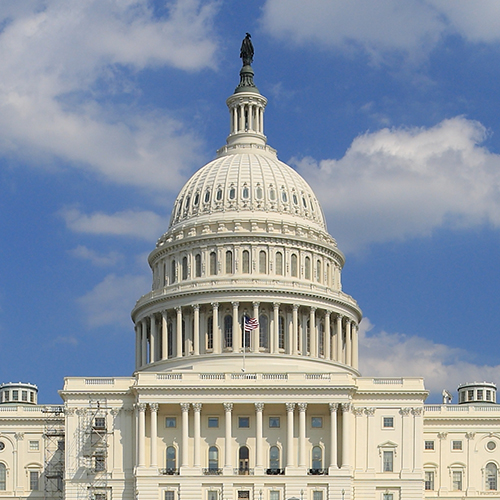Protestant churchgoers in the 1960s typically belonged to a small congregation with no more than 75 members. But since the 1970s, membership in small churches has declined as megachurches—churches with a weekly attendance of 2,000 or more--have gained in popularity. Today more than 50 percent of all churchgoers attend the largest ten percent of churches in America. James Wellman, UW professor and Presbyterian minister, has studied the appeal of such churches.
Wellman, chair of the Comparative Religion Program in the Jackson School of International Studies, tapped existing data and conducted supplemental interviews for his research. The existing data, from the Database of Megachurches in the U.S., includes nearly 30,000 surveys of megachurch congregants and more than 400 individual or group interviews. “No one was doing anything with the data,” says Wellman. “It’s a beautiful data set. It’s like a Christmas present.”

Wellman and graduate student Kate Stockly-Meyerdirk read through all the interviews, independently coding them for key words related to four major themes: salvation and spirituality, acceptance and belonging, admiration and guidance from the leader, and morality and purpose through service. Comparing their coding, they found certain patterns.
“There was not a big focus on belief, which was surprising to me,” says Wellman. “Instead the data was overwhelmingly rich with words related to sensory experience and the emotions. Words like ‘thirsting’ and ‘touching’ and ‘longing’ were not only peppered throughout the interviews but were the driving force behind nearly every description and often the punch line to a story. We didn’t go into the research intending to find the prevalence of this affective expression, but in the coding process, this focus on forms of emotional energy became clear and consuming.”
Fascinated by this finding, Wellman—with Stockly-Meyerdirk and graduate student Katie Corcoran—explored how megachurches elicit such emotional responses. They found a possible answer in sociologist Randall Collins’ “interaction ritual theory.” Simply stated, the theory suggests that successful rituals result in a positive emotional energy for participants, and that this emotional energy “has a powerful motivating effect upon the individual; whoever has experienced this kind of moment wants to repeat it.”
Collins outlines four ritual ingredients that yield strong positive emotional responses: bodily assembly of participants, barriers excluding outsiders, mutual focus of attention, and a shared emotional mood. All of these are applicable to religious rituals—although Wellman argues that megachurches welcome rather than exclude outsiders. Based on Collins’ theory, it’s no surprise that congregants at megachurches keep coming back.
Collins outlines four ritual ingredients that yield strong positive emotional responses: bodily assembly of participants, barriers excluding outsiders, mutual focus of attention, and a shared emotional mood. All of these are applicable to religious rituals—although Wellman argues that megachurches welcome rather than exclude outsiders. Based on Collins’ theory, it’s no surprise that congregants at megachurches keep coming back.
It could be argued that any church experience would have a similar effect. After all, many church services are steeped in ritual and group bonding. But Wellman asserts that megachurches are particularly masterful at heightening these ritual experiences. For starters, megachurch pastors tend to be unusually skilled speakers, presenting sermons that are “moving but not intellectually taxing.” The musicians who perform—most megachurch services begin with five songs, followed by a sermon—are also top-notch. And the large group setting heightens the experience of belonging.
“The intense emotions that are often evoked are especially intensified by the fact that there are thousands of people experiencing the same thing,” explains Wellman. “Cameras scan the audience and project images of people worshipping, raising their hands with closed eyes, crying, singing, or smiling. Empathetic understandings of the emotions that other worshippers are experiencing intensify one’s own emotional energy.”

Wellman identifies other appealing features of megachurches. They are welcoming to an exceptional degree, with greeters sometimes armed with hot coffee for congregants as they arrive. They offer childcare. They organize weekly groups for every interest imaginable, from bowling groups to service activities in the community to groups for divorcees or single women. Although the emotional energy from the Sunday service eventually wanes, it rebuilds through these smaller group offerings. “That’s what they’ve perfected,” says Wellman. “It’s very smart.”
Wellman likens this approach to a cross between Costco, with its broad selection of offerings due to its size, and Nordstrom, with its emphasis on customer service. There’s a touch of McDonald’s too, he says, with megachurches working hard to be fun, upbeat, non-threatening, and come-as-you-are. “They create an experience that sometimes feels like it’s not even a church,” he says.
Given his comparisons to chain stores and restaurants, one might assume that Wellman is a critic of megachurches. Not so. In fact, after logging many hours in megachurches and interviewing congregants for his research, Wellman has a greater appreciation for what they are able to accomplish.
“It’s an effective method to socialize a group and point them in a positive direction,” says Wellman, who recalls how 600 church volunteers in San Diego completely refurbished a city park in a day. “Are megachurches perfect? No. But they are really positive places. I’ve been surprised by how happy—and not just put-on happy— the people at these churches are. There’s a very high satisfaction with both the social and spiritual experience.”
More Stories

Is This Presidential Campaign Different?
UW History professor Margaret O'Mara provides historical context for this moment in US presidential politics.

Making Sense of This Political Moment
To navigate this momentous election season, Arts & Sciences faculty suggest 10 books about the US political landscape.

A Statistician Weighs in on AI
Statistics professor Zaid Harchaoui, working at the intersection of statistics and computing, explores what AI models do well, where they fall short, and why.